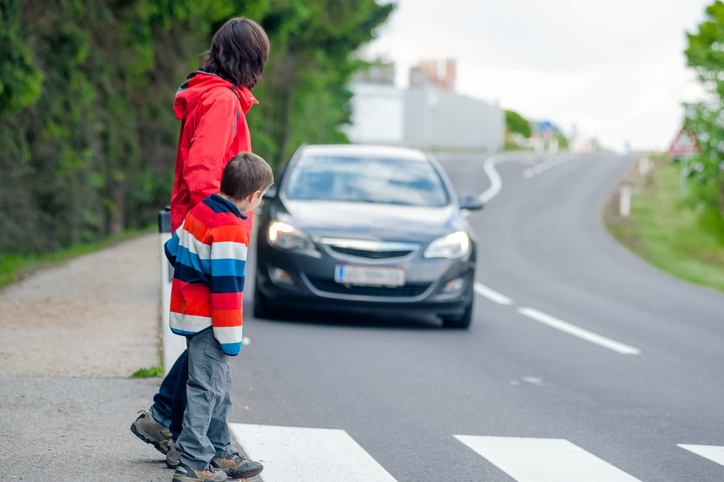Highway Code changes and vulnerable road users

Authored by QBE Motor Risk Manager Kenny Rutt
A newly created Highway Code ‘hierarchy of road users’ came into effect from 29th January, which puts more responsibility on drivers of larger vehicles, such as buses, coaches, trucks and vans, to reduce the dangers around them.
If an incident occurs, liability will automatically lie with those ‘who can do the greatest harm’, unless proven otherwise – meaning that HGV and van drivers will be deemed more liable than car drivers, and so on.
Vulnerable road users
Three changes that are particularly relevant to reducing risk around vulnerable road users are:
Drivers no longer have priority at junctions – If you’re turning at a junction and there’s a vulnerable road user (e.g. pedestrian, children, cyclist, horse-rider, etc) ready or preparing to cross, these road users have right of way. You should stop safely and give way. In addition, cyclists should give way to pedestrians on shared-cycle tracks.
Cyclists can ride wherever they feel the safest / most visible – There is no legal requirement for cyclists to use cycle lanes where provided. Even if there are adjoining cycle lanes and tracks, cyclists are not obliged to use them.
Cyclists have previously only been mandated to ride on the left. It is expected that cyclists will now ride more to the centre of the lane to make themselves more visible to other road users. There’s a risk here that this may hamper safe overtaking opportunities and lead to some frustrated drivers gambling with an unclear road ahead. Also, vehicles must now pass cyclists with at least 1.5 metres (c.5 ft) space at up to 30mph; so more distance is required when overtaking at higher speeds.
The ‘Dutch Reach’ is the recommended method of vehicle exit – In an attempt to cut the number of cyclists hit by car doors unexpectedly swinging open, drivers are encouraged to open their door by using the hand on the opposite side. This is known as the Dutch Reach technique. It prompts a passenger or driver to swivel their bodies and is more likely to lead to them looking over their shoulder and see passing cyclists. Education for drivers to instil the new habit will help with this cultural change.
There are a number of other updates to the Highway Code, which can be read on the gov.uk website
Free e-training available
As a leading commercial motor insurer, we encourage transport and fleet managers to provide staff briefings to raise awareness with employees who drive for work purposes to help support knowledge transfer and reduce the risk of collisions.
To help you, our risk management partner E-Training World have produced a short free training module, which takes less than five minutes to complete and will help drivers to be more aware of the risks and stay safe on the roads. Click here to access the free e-training.
Risk management services for QBE customers
QBE helps businesses build resilience through risk management and insurance.
With almost a century of insuring commercial vehicles, 50 years’ experience in insuring bus and coach fleets, and 30 years as the UK leader in minibus insurance, QBE is fully committed to the motor sector and proactively helping customers to manage risk and drive down claims. This approach has made QBE a name to trust in commercial motor insurance.
QBE customers can access self-assessment questionnaires and a library of risk management material, along with a panel of approved partners who offer training, e-learning and other services at specially reduced rates. You can find more information in our Motor risk management service offerings brochure, and find out more about how QBE helps businesses to manage risk here.
Need to claim? Report it early
Finally, a reminder that if you have an incident and need to make an insurance claim, it’s important that you report it as soon as possible, ideally the same day. Reporting a claim early can save time and help you to receive any claim payments faster, as well as allowing us to help mitigate the cost of third-party claims.
Downloads





